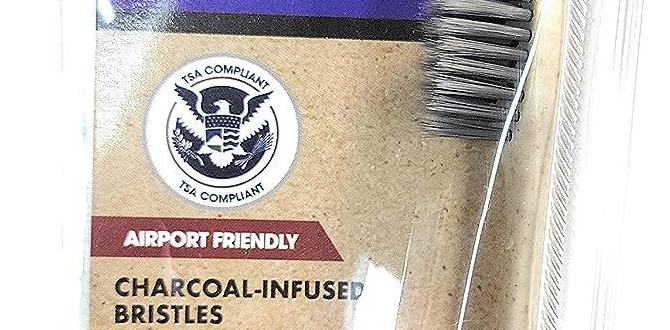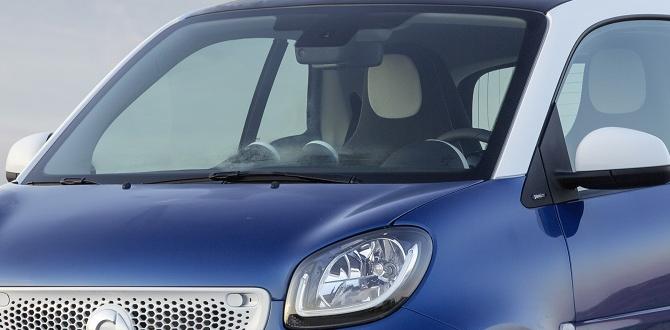Can you imagine flying without worrying about lost luggage? Most people can only dream! Carry-on luggage can solve this problem. But what are the rules for flying with carry-on luggage?
Picture this: you’re at the airport, eager for your holiday, and you see someone struggling with a giant bag. They didn’t know the rules and now face delays. Did you know most airlines let you bring a small suitcase and a personal item on board? Sounds simple, right? Yet, there are rules to follow. You might wonder why some bags fit overhead but others don’t. The key is knowing what’s allowed.
Here’s a fun fact: airlines have a secret weapon called “baggage sizers” to check your bags. It’s like a magic box that decides if your bag can fly. With smart packing and knowing the rules, you can avoid surprises. Do you want your trip to start stress-free? Let’s dive into the secret world of carry-on luggage!
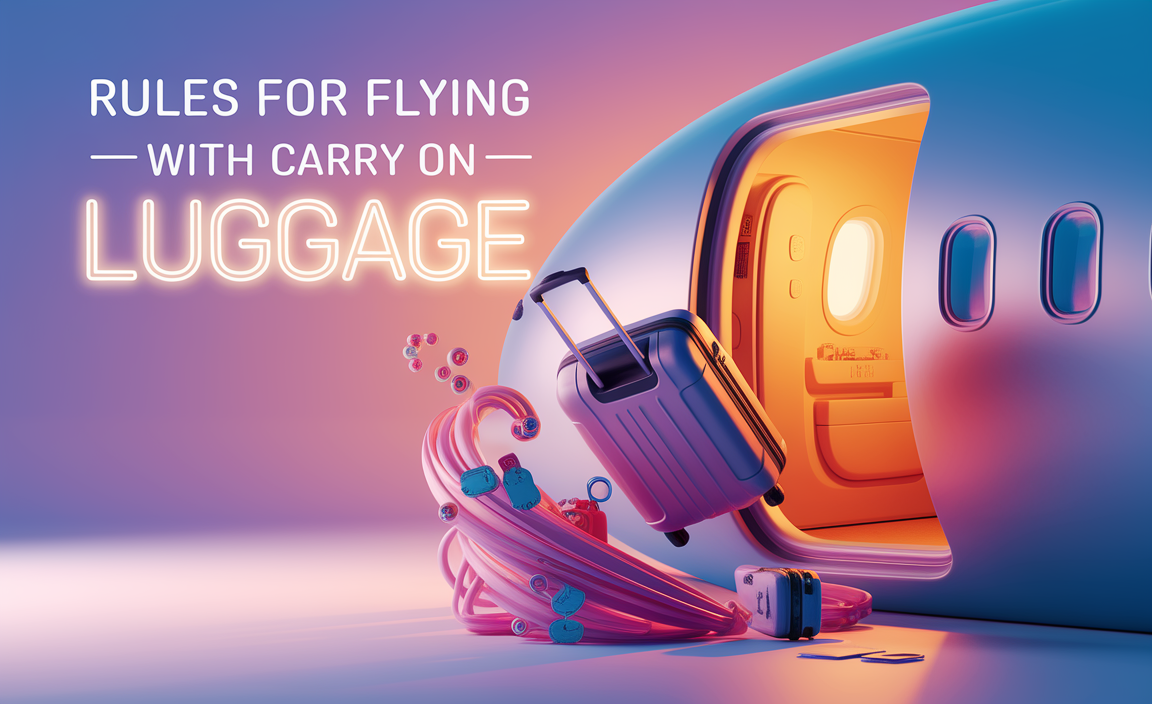
Essential Rules For Flying With Carry-On Luggage
Features to look for in a compliant carryon. Tips for maximizing space and efficiency. Picking a carry-on bag feels like a game of Tetris. First rule? Size matters! Check your airline’s dimensions before you buy. Wheels?

Spinner wheels are your best travel buddies for smooth gliding. Multiple compartments? A true lifesaver for stuffing in souvenirs or squished sandwiches. Want to maximize space? Roll, don’t fold, clothes to fit more in your tiny suitcase! Want a secret? Stuff socks inside shoes. Go, packing master!
| Feature | Why It’s Important |
|---|---|
| Size | Makes sure your bag fits overhead. |
| Wheels | Easy navigation through the airport. |
| Compartments | Helps organize your items. |
Prohibited Items in Carry-On Luggage
Commonly restricted items by security regulations. Liquid and gel limitations explained.
As you pack your carry-on, remember the airport security rules. You don’t want to lose your favorite snow globe or get caught with a big bottle of water. Security doesn’t allow liquids or gels over 3.4 ounces (that’s about 100 milliliters, not much bigger than a magic potion bottle). So, save room and possible embarrassment by packing smart. Want to save time at security? Leave these items at home:
| Item | Allowed in Carry-on? |
|---|---|
| Scissors (longer than 4 inches) | No |
| Large Liquid Bottles | No |
| Nail clippers | Yes |
| Tennis Racket | Yes |
If you ask, “Can I bring jam?” The answer is “No, it’s a gel.” And for those thinking of bringing their favorite jelly donut—better eat it before the airport. Follow these guidelines, and your trip might be free of security surprises unless your teddy bear looks suspicious.
Packing Tips for Carry-On Travel
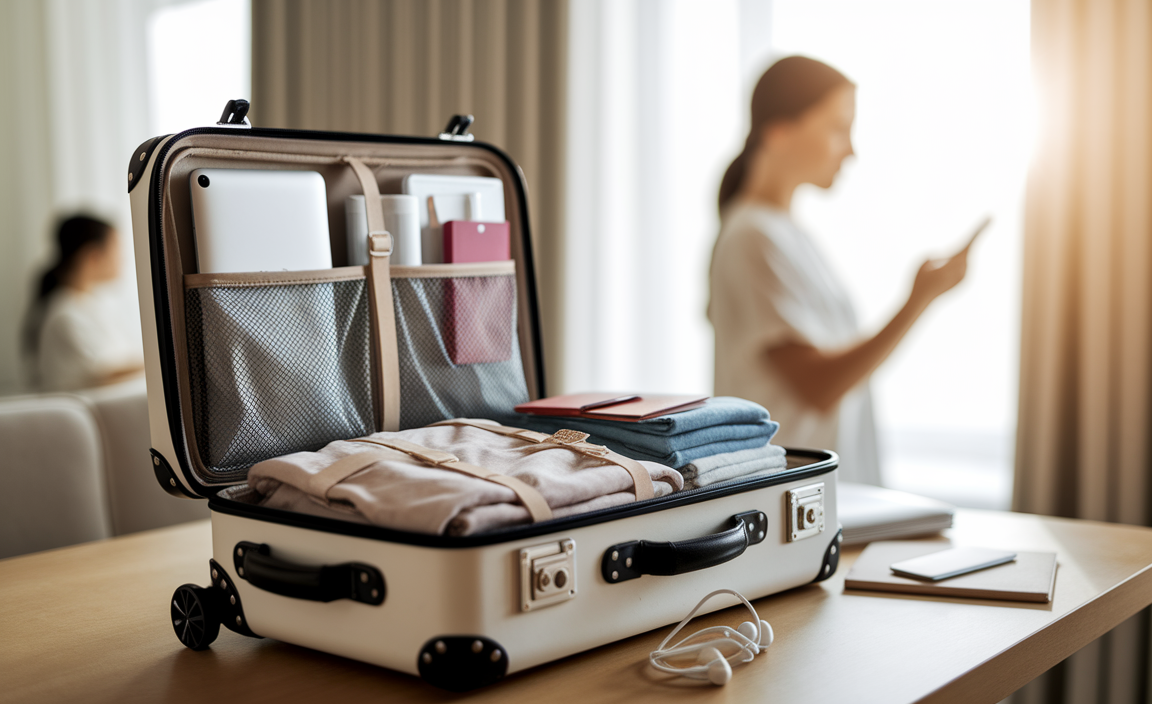
Strategies for efficient packing and organization. Tips for packing electronics and accessories safely. Packing smartly can make travel easy. Follow these tricks for carry-on bags:
- Roll clothes instead of folding. This saves room and keeps clothes wrinkle-free.
- Use packing cubes to keep things neat and easy to find.
- Place heavier items like shoes at the bottom of your bag.
- Keep liquids in small bottles. Put them in a clear, resealable bag.
- Secure electronics safely in the center of your bag, cushioned by clothes.
- Wrap cords and chargers with elastic bands to prevent tangles.
How can I pack electronics and accessories safely?
Always use cushioning for your gadgets. Clothes work well to protect them. Keep small items, like chargers and earphones, in a zippered pouch. This makes them easy to find and reach in a hurry.
What is the trick to saving space in my carry-on?
Roll your clothes and use packing cubes. These will help fit more items and keep your bag organized.
Now you know how to pack smartly!
Navigating Security Checkpoints with a Carry-On
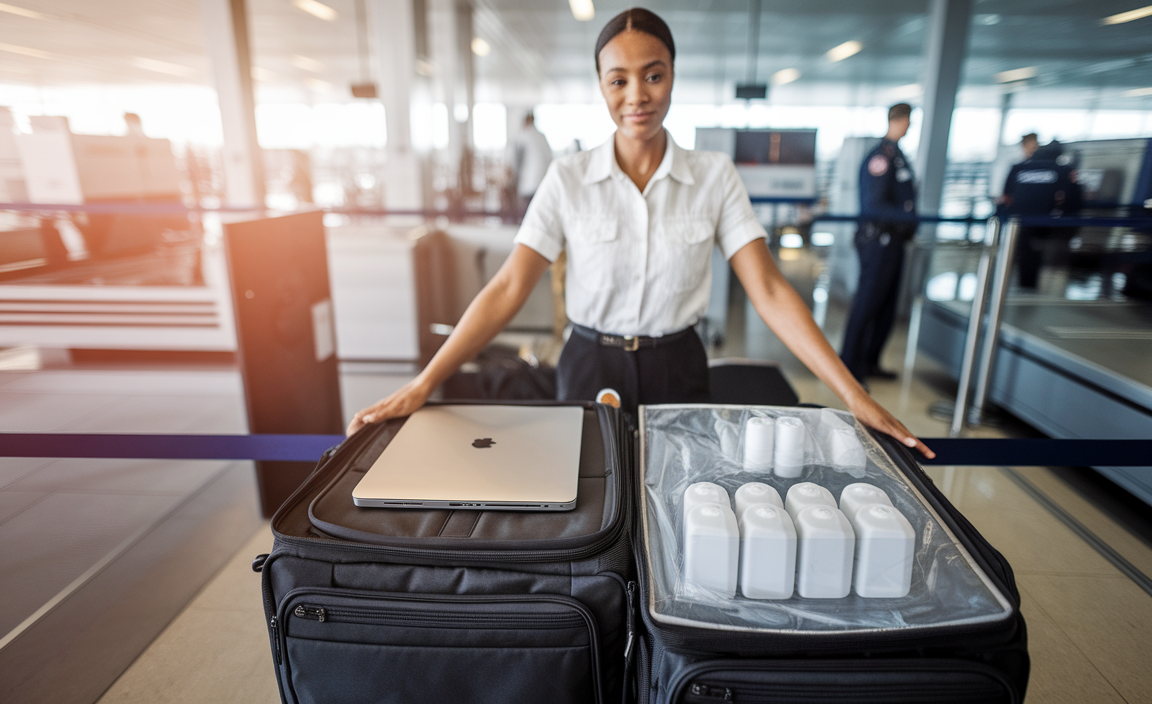
Tips for a smooth security screening process. How to prepare your carryon for easier scanning. Standing in line at airport security can feel like waiting to meet a celebrity—you squeal with joy when it’s finally your turn! To breeze through, pack smart. Place your laptop in an easy-to-reach spot. Liquids under 100ml? Put them in a clear bag, ready to show off at security. Keep metal items in your carryon for fewer beep-beeps.
| Tips | Why it Helps |
|---|---|
| Pack efficiently | Makes unpacking faster |
| Know the rules | Avoids delays |
Want a hassle-free scan? Pack clothing and footwear together, like socks with a side of sneakers. Prepare your gadgets for their moment in the spotlight, and you’ll waltz through the checks with grace. Consider it your airport adventure!
Rules for Personal Items and Their Role
Differentiating between carryon bags and personal items. How to optimize the use of personal items in your travel.
Many wonder about the difference between carryon bags and personal items. A personal item is smaller and fits under the seat. It could be a backpack or purse. To optimize them, pack essentials like snacks, books, or gadgets. Airlines allow a carryon and personal item, so make the most of both! This way, you’ve got everything you need handy during the flight. How do you make sure you’re ready?
- Choose wisely: Select a versatile yet compact personal bag.
- Organize: Pack gadgets and travel-sized toiletries in them.
What is considered a personal item on a plane?
A personal item is a small bag like a backpack or a purse. It must fit under the seat. Common examples include laptop bags, briefcases, or smaller backpacks. Airlines usually have guidelines on size, so always check their rules.
How large can a personal item be?
Usually, a personal item’s dimensions are around 16 x 12 x 6 inches, but this varies. Always check your airline’s policy before flying. This ensures the item fits under the seat, allowing easy access.
Forgetting essentials could hasten headaches or boredom during your flight. As the saying goes, “Better to have and not need than need and not have.”
| Type | Examples |
|---|---|
| Personal Items | Backpack, Purse, Briefcase |
| Carryon Items | Small Suitcase |
With smart packing, your travel can be smoother and more enjoyable. Remember, your personal item can be your lifeline during the flight!
Addressing Special Circumstances with Carry-On Luggage

Carryon rules for families traveling with infants or young children. Guidelines for travelers with medical necessities or equipment. Traveling with little ones can be an adventure, and their baby gear needs some room too! Families with infants often have special rules for carry-ons.
Parents can bring a diaper bag without counting it as luggage. Isn’t that handy? For those with medical gear, airlines understand the importance of these items. Equipment like CPAP machines can be part of your carry-on without any charges. Check the table below for quick guidelines!
| Situation | Carry-on Rules |
|---|---|
| Families with infants | Diaper bag is exempt from carry-on limits |
| Travelers with medical equipment | Medical devices can be carried for free |
Did you know? Airlines often assist with storing medical gear in the cabin. So, breathe easy and enjoy your journey!
Tips for Smooth Boarding with a Carry-On
Board strategies to ensure overhead space for your carryon. How to handle gatechecking if required. Flying can be a game of strategy, especially if you need to find space for your carry-on!
To ensure room up top, try boarding early. Remember, even an umbrella can snag the last spot. If gate-checking becomes a must—you know, when your bag is too chunky for the bin—don’t fret. The pros say to remove any personal items first. As one wise traveler said, “A prepared passenger never panics!” So, pack smart, and laugh at travel woes.
| Strategy | Tip |
|---|---|
| Early Boarding | Guarantees overhead space |
| Gate-check Preparation | Remove valuables |
Conclusion
Understanding carry-on luggage rules can make your trip smoother. Remember size limits, restricted items, and weight restrictions. Pack smartly to avoid surprises. Always check your airline’s specific guidelines before flying. For more tips, read travel blogs or airline guidelines. Happy travels!
FAQs
What Are The Size And Weight Restrictions For Carry-On Luggage On Major Airlines?
Most airlines let you bring a carry-on bag onto the plane. It usually can be about 22 inches tall, 14 inches wide, and 9 inches deep. That’s like a small suitcase. Your bag should weigh about 15 to 22 pounds. Remember, rules can vary, so check with your airline.
Are There Specific Items That Are Prohibited From Being Carried In Carry-On Luggage?
Yes, some things are not allowed in carry-on bags when you fly in a plane. You can’t bring liquids like water and juice in big bottles. Sharp things like scissors or knives are not allowed. Big sports gear, like baseball bats, should also stay out of your bag. Always check what isn’t allowed before you pack your bag.
How Can Passengers Maximize Space And Efficiency When Packing Their Carry-On Luggage?
To pack your carry-on bag well, start by rolling your clothes instead of folding them. This saves space. Put small things, like socks, inside your shoes. Use travel-sized bottles for toiletries. Group similar items together in little bags to keep your stuff neat.
What Are The Guidelines For Carrying Liquids And Gels In A Carry-On Bag?
When we fly on a plane, we can pack liquids and gels in our carry-on bag, but there are rules. Each liquid or gel must be in a container that holds 3.4 ounces or less. You need to put all these containers in one clear, zip-top plastic bag about the size of a sandwich bag. You can take a larger container if you have special liquids like medicine or baby milk, but it’s best to tell the airport staff about them. Remember to pack all larger bottles in your checked suitcase, not your carry-on.
Are There Differences In Carry-On Luggage Rules Between Domestic And International Flights?
Yes, carry-on luggage rules can be different for domestic and international flights. On international flights, you might need smaller bags or fewer items than on domestic ones. Airlines can have different rules, so always check with them first. It’s important to know the rules to avoid surprises at the airport.
Resource:
TSA Carry-On Liquids Policy: https://www.tsa.gov/travel/security-screening/whatcanibring/items/liquids-rule
CDC Travel Health Tips: https://wwwnc.cdc.gov/travel/page/traveler-information-center
Packing Tips from Travel Experts: https://www.travelandleisure.com/travel-tips/packing-tips
FAA Guidelines for Cabin Baggage: https://www.faa.gov/travelers/fly_safe/cabin_safety
{“@context”:”https://schema.org”,”@type”: “FAQPage”,”mainEntity”:[{“@type”: “Question”,”name”: “What Are The Size And Weight Restrictions For Carry-On Luggage On Major Airlines? “,”acceptedAnswer”: {“@type”: “Answer”,”text”: “Most airlines let you bring a carry-on bag onto the plane. It usually can be about 22 inches tall, 14 inches wide, and 9 inches deep. That’s like a small suitcase. Your bag should weigh about 15 to 22 pounds. Remember, rules can vary, so check with your airline.”}},{“@type”: “Question”,”name”: “Are There Specific Items That Are Prohibited From Being Carried In Carry-On Luggage? “,”acceptedAnswer”: {“@type”: “Answer”,”text”: “Yes, some things are not allowed in carry-on bags when you fly in a plane. You can’t bring liquids like water and juice in big bottles. Sharp things like scissors or knives are not allowed. Big sports gear, like baseball bats, should also stay out of your bag. Always check what isn’t allowed before you pack your bag.”}},{“@type”: “Question”,”name”: “How Can Passengers Maximize Space And Efficiency When Packing Their Carry-On Luggage? “,”acceptedAnswer”: {“@type”: “Answer”,”text”: “To pack your carry-on bag well, start by rolling your clothes instead of folding them. This saves space. Put small things, like socks, inside your shoes. Use travel-sized bottles for toiletries. Group similar items together in little bags to keep your stuff neat.”}},{“@type”: “Question”,”name”: “What Are The Guidelines For Carrying Liquids And Gels In A Carry-On Bag? “,”acceptedAnswer”: {“@type”: “Answer”,”text”: “When we fly on a plane, we can pack liquids and gels in our carry-on bag, but there are rules. Each liquid or gel must be in a container that holds 3.4 ounces or less. You need to put all these containers in one clear, zip-top plastic bag about the size of a sandwich bag. You can take a larger container if you have special liquids like medicine or baby milk, but it’s best to tell the airport staff about them. Remember to pack all larger bottles in your checked suitcase, not your carry-on.”}},{“@type”: “Question”,”name”: “Are There Differences In Carry-On Luggage Rules Between Domestic And International Flights? “,”acceptedAnswer”: {“@type”: “Answer”,”text”: “Yes, carry-on luggage rules can be different for domestic and international flights. On international flights, you might need smaller bags or fewer items than on domestic ones. Airlines can have different rules, so always check with them first. It’s important to know the rules to avoid surprises at the airport.”}}]}


